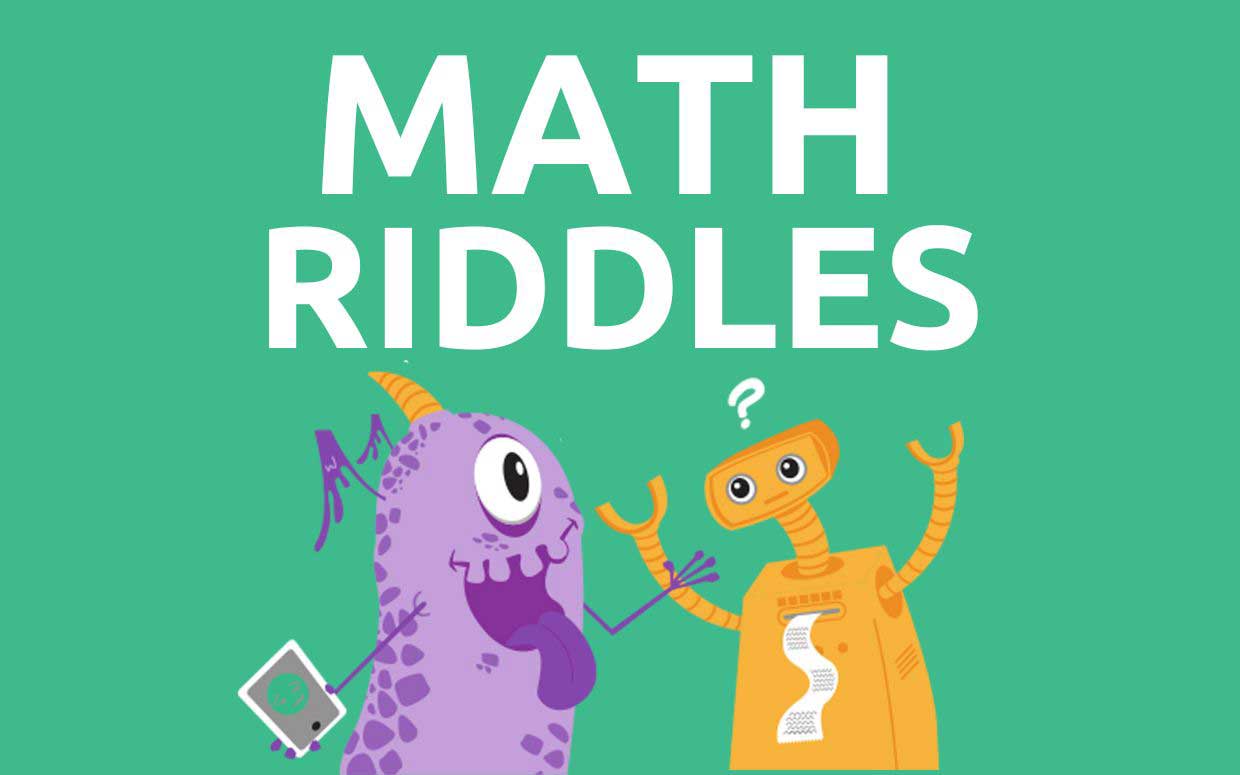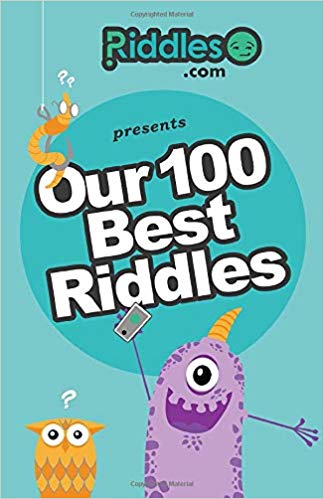
Riddle:
It takes the town hall clock 6 seconds to strike 4 o'clock in the afternoon. How long does it take to strike midnight?
Answer: 22 Seconds.
Riddle:
Two wine merchants arrive at the gates of Paris. One has 64 and the other 20 barrels of wine. Since they have not enough money to pay the custom duties, the first pays 40 francs and 5 barrels of wine. The second pays 2 barrels of wine but receives 40 francs in change.
What is the value of each barrel of wine and what is the duty payable?
Answer: The value of a barrel is 120 francs and the duty is 10 francs a barrel.
Riddle:
Mr. and Mrs. Smith were walking home from the shopping mall with their purchases when Mr. Smith began to complain that his load was too heavy. Mrs. Smith turned to her husband and said, "I don't know what you're complaining about because if you gave me one of your parcels, I would have twice as many as you and if I gave you just one of mine, we would have equal loads." How many parcels was each carrying?
Answer: Mrs. Smith was carrying seven parcels and Mr. Smith was carrying five.
Riddle:
My age today is three times what it will be three years from now minus three times what my age was three years ago. How old am I?
Answer: Don't be too confused, the answer is 18 years old.
Riddle:
Charlotte is 13 years old. Her father Montague is 40 years old. How many years ago was Charlotte's father four times as old as Charlotte?
Answer: Four years ago. When Charlotte was 9 her father was 36, 4 times her age.
Riddle:
A man has nine children, born at regular intervals. The sum of their squares of their ages is equal to the square of his own age.
What are the ages of the children?
Answer: 2 - 5 - 8 - 11 - 14 - 17 - 20 - 23 - 26
Riddle:
When I asked her how old she was, she smiled and said cryptically: "The day before yesterday I was 22, but next year I'll be 25." What is her birthday and when was the date of our conversation?
Answer: We conversed on January 1 and her birthday was on December 31. So, the day before yesterday on Dec. 30th she was 22 and he turned 23 on Dec. 31. So her next birthday, when she turns 24, would be Dec. 31 of the same year the question was asked. However, next years birthday would be the following year on Dec. 31, when she would be 25.
Riddle:
'How much is this bag of potatoes?' asked the man. '32lb divided by half its own weight,' said the green grocer.
How much did the potatoes weigh?
Answer: 8lbs.
Riddle:
Edward is as old as Benjamin used to be when Edward was as old as Benjamin is now.
Benjamin is 36. How old is Edward?
Answer: Edward is 48.
Riddle:
A man bumps into his mathematician friend on the street whom he hasn't seen in 5 years. The man asks the mathematician how old his children are. The mathematician, who always replies in riddles said, "I now have three children. The sum of their ages is equal to the number of windows on the building in front of you and the product of their ages equals 36." The friend then says "I need one more piece of information." The mathematician then replies "My youngest child has blue eyes." What are the ages of the mathematician's three children?
Answer: They are 6, 6, and 1.
Riddle:
Out of 100 ladies attending the gala,85 had a white hand bag;75 had black shoes;60 carried an umbrella;90 wore a ring;
How many ladies must have had all four items?
Answer: 10
Divide by 3. All the ladies had three items. The remainder shows the number of ladies who had 4.
85756090______310 / 3 = 100 + 10 remainder
Riddle:
Jack had only $2, but he needed $3 for his cab fare home. He went to a pawn shop and pawned his $2 for $1.50. Jack then bumped into Don and told him that he would sell him his $2 pawn ticket for $1.50. Don agreed. Jack started out with $2 and he ended up with $3. Who is out the extra dollar and why?
Answer: Don is out the extra dollar. Before the pawn broker will return the $2 to the ticket holder, he will want the $1.50 which he advanced returned to him. Don will give the pawn broker the ticket and the $1.50, and the pawn broker will then return the $2.
Riddle:
If you toss a die and it comes up with the number one 9 times in a row, what is the probability that it will come up with one on the next throw?
Answer: One in six. A die has no memory of what it last showed.
Riddle:
A rubber ball is tossed off the top of a 90 foot building. Every time it bounces, it goes back up half way. How many bounces will the ball take before it stops?
Answer: The answer is infinite, in a gravity free world. But of course gravity will eventually stop it.
Riddle:
'When Gwen is twice as old as Dean, Then I shall be just 17. But Gwendoline was 23 When Dean was twice as old as me.' Thats what Bill said.
So tell us then, How old he was when Dean was ten?
Answer: Eight.
Riddle:
What is the value of 1/2 of 2/3 of 3/4 of 4/5 of 5/6 of 6/7 of 7/8 of 8/9 of 9/10 of 1,000?
Answer: One hundred - work backwards and you will understand.
Riddle:
What single-digit number should go in the box with the question?
| 6 | 5 | 9 | 2 | 7 |
| 1 | 4 | 3 | 5 | ? |
| 8 | 0 | 2 | 8 | 1 |
Answer: The missing number is 4. Simply add the first and second rows together to get the third row value.
| 65, 927 | |
| + | 14, 354 |
| 80, 281 |
Riddle:
How many times does the long hand of the clock pass the short hand between midnight one day and midnight the following day? As both hands are together at the starting time of midnight this does not count as a pass.
Answer: 21.
Riddle:
A baseball and a bat combined cost $1.10. If the bat costs $1 more than the baseball, how much does the baseball cost?
Answer: If you said $0.10, you're wrong. The answer is $0.05 because the bat, costing $1 more than the baseball, will cost $1.05. $1.05+$0.05 is $1.10.
Riddle:
Find four numbers, the sum of which is 45, so that if 2 is added to the first number, 2 is subtracted from the second number, the third number is multiplied by 2 and the fourth number is divided by 2, then the four numbers so produced are all the same. What are the four numbers?
Answer: 8 + 2 = 10
12 - 2 = 10
5 x 2 = 10
20 ÷ 2 = 1045

